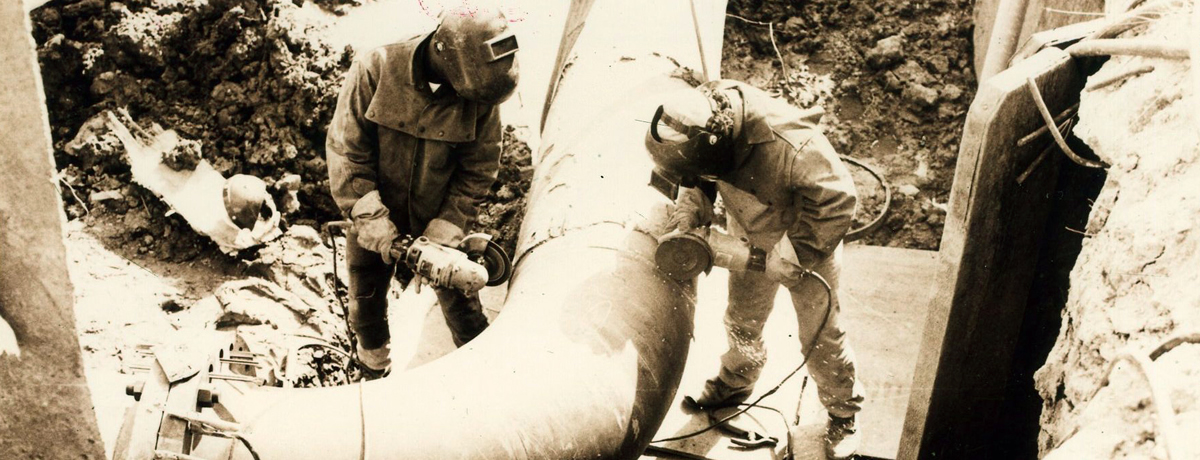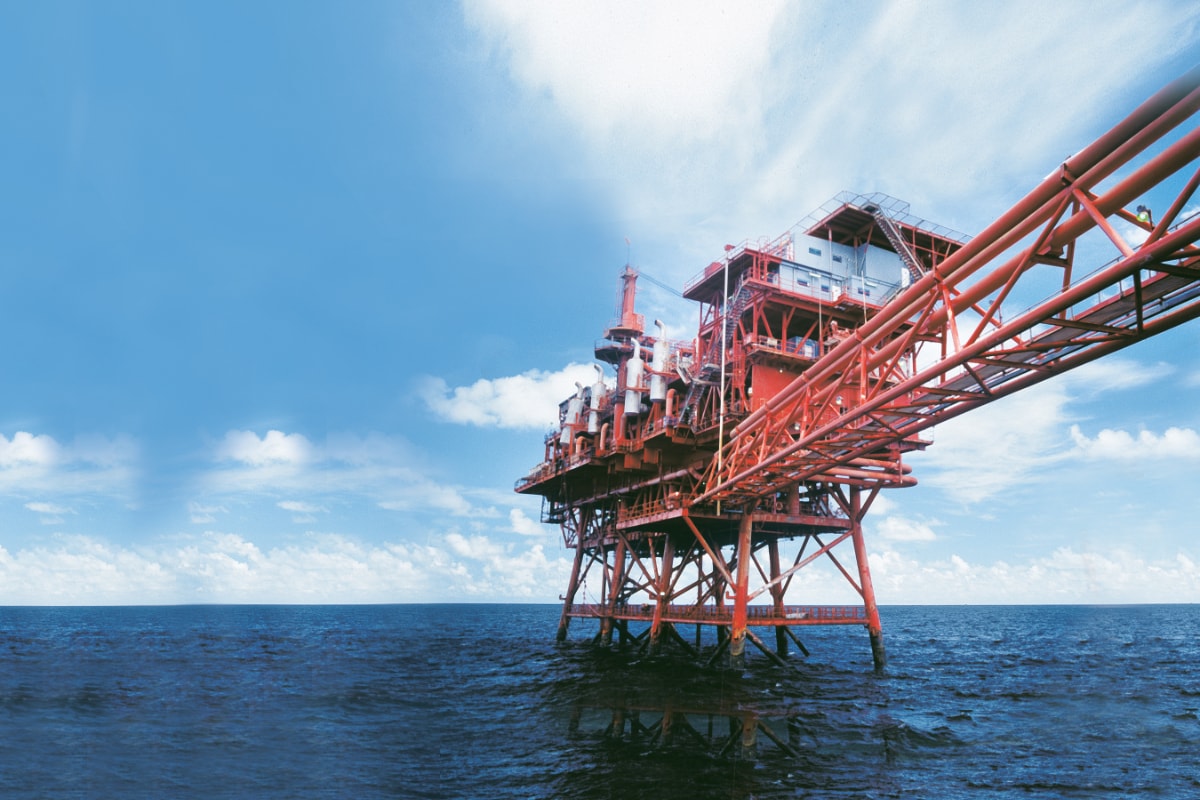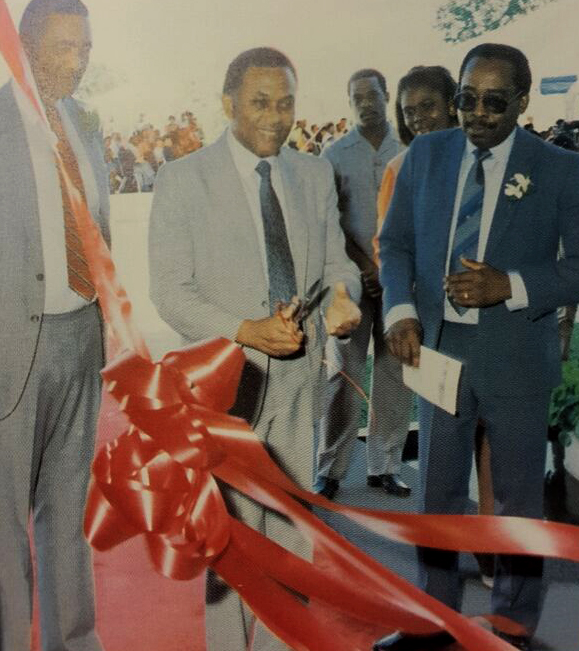
Early Years of Operation
NGC opened for business in a small office at 54 Abercromby Street, Port…..
NGC opened for business in a small office at 54 Abercromby Street, Port of Spain before relocating six months later to 60 Pembroke Street.In 1976, having secured a government advance of TT$80,000, NGC assisted in the supervision and construction of the TT$31 million 23-mile, 24-inch-diameter line from Beachfield to Picton and operated and maintained the TT$12 million 44-mile, T&TEC 16-inch-diameter pipeline system from Penal to Port of Spain.
On 1 January 1978, a 24-mile, 24-inch-diameter marine line built with Government’s funds of TT$68 million and under the control of NGC was commissioned from Amoco Teak ‘B’ to Point Galeota, bringing the country’s transmission capacity to 400 MMscf/d.

Even in its early years of operations, NGC had fully entrenched itself as an integrated multi-energy company, as a merchant of natural gas, purchasing, transporting, supplying and selling natural gas to four heavy consumers of natural gas and 18 light industrials/ manufacturers located mainly in the east-west corridor. By 1978, total gas sales amounted to 150 MMscf/d.
The Flare Gas Conservation Project
Concerned that over 180 MMscf of natural gas was being flared and lost daily in the Teak and Poui marine fields located off Trinidad’s southeast coast, NGC, in July 1979, was given the huge task of implementing the Flare Gas Conservation Project to stem the wastage of this valuable resource.
The project, representing four years of study, comprised the design, construction and installation of two offshore compression facilities through which a major portion of the flared gas could be saved and compressed, prior to being transferred to land for commercial and industrial use in areas such as power generation.

The installation and commissioning of NGC’s Teak and Poui in 1981/1982 has been hailed as one of the greatest milestone events in the local gas industry with compressed gas from the project providing NGC with its cheapest supply of natural gas, allowing the Company to extend the country with subsidised fuel for its electricity needs.
A decade later, the project continued to be beneficial, providing some 19% of the total supply of 506 MMscf/d from the fields allowing T&TEC’s electricity rates per KWh to remain one of the cheapest in the Western Hemisphere.
NGC, a homegrown State enterprise company, with an innovative spirit and purposeful objective enjoyed early success in a project that brought immediate and direct benefits to the population of Trinidad and Tobago through subsidised electricity bills.
A decade of growth
 The 1980s was a decade of growth and consolidation for both NGC and the gas industry. NGC relocated offices twice in 1980 to accommodate its land-based employees and for the offshore component that was being created for prospective offshore operations.
The 1980s was a decade of growth and consolidation for both NGC and the gas industry. NGC relocated offices twice in 1980 to accommodate its land-based employees and for the offshore component that was being created for prospective offshore operations.
The growth of the Company also reflected in significant construction work undertaken to meet increasing demands for gas by the new plants based at the Point Lisas Estate.
They did this by constructing:
- As a loop-line to the T&TEC system, a 13-mile, 20-inch diameter pipeline between two crucial valve stations, Picton and Phoenix Park
- A 4-mile, 24-inch-diameter line from Galeota to Beachfield
- A 35-mile, 30-inch-diameter cross-country line from Beachfield to Phoenix Park, via Rio Claro
- A 30-inch-diameter marine line from Cassia offshore field to Galeota station
- A trunk line, from Mahaica to the Princess Margaret Highway, which served the distribution line connecting small consumers located in the O’Meara and Macoya estates.
 By the end of 1984, construction activities and new plants on stream saw NGC gas sales increase to 343 MMscf/d from 192 MMscf/d in 1980 while the gas-based sector moved from a single ammonia plant to four, a new power plant at Point Lisas, a steel mini mill, and methanol and urea facilities.
By the end of 1984, construction activities and new plants on stream saw NGC gas sales increase to 343 MMscf/d from 192 MMscf/d in 1980 while the gas-based sector moved from a single ammonia plant to four, a new power plant at Point Lisas, a steel mini mill, and methanol and urea facilities.
 Acknowledging the expansion of the gas sector business, Prime Minister George Chambers in January 1985 alluded to the continuing importance of the country’s energy-intensive industries in stimulating industrial growth and the diversification of foreign exchange earnings.
Acknowledging the expansion of the gas sector business, Prime Minister George Chambers in January 1985 alluded to the continuing importance of the country’s energy-intensive industries in stimulating industrial growth and the diversification of foreign exchange earnings.
NGC’s central role in the energy sector further escalated with a number of investments in all segments of the gas value chain. In the midstream sector, NGC undertook two major investments:
- Majority shareholding interest of 49% in PPGPL, the country’s first natural gas liquids plant which had a design capacity of 650MMscf/d
- Shareholding interest of 18% in National Helicopter Services Limited (NHSL) and construction of a new heliport that could provide ‘take off’, landing and hangar facilities for helicopters transporting staff to and from offshore installations.
NGC was also involved in major investments in the upstream segment:
- A 20% interest in Trintomar, the country’s flagship marine gas production company which operated in the Pelican Field.
- By updating and improving its operations in the Teak marine field since it became aware that there was more gas in that field than formerly anticipated. The combined capacity of the two platforms later increased from 108 to 141 MMscf/d. By 1989, gas sales had increased to 431 MMscf/d.
Through its strategic investments in key areas of the natural gas value chain, NGC lived up to the spirit of its mandate to be at the centre of the industry with multiple roles as a compressor, merchant and transporter of natural gas, as well as having interest in gas production.
